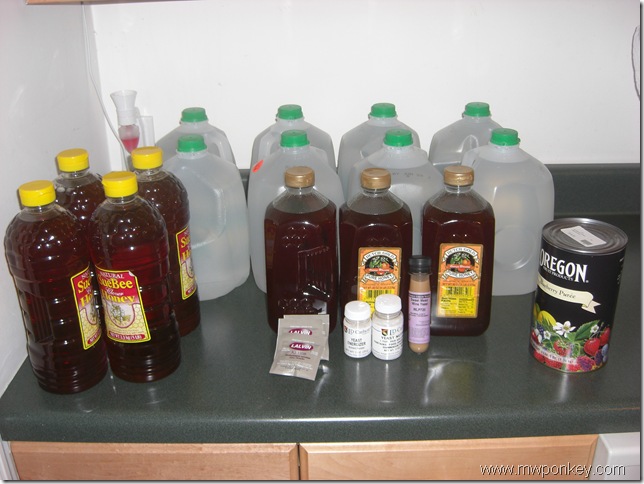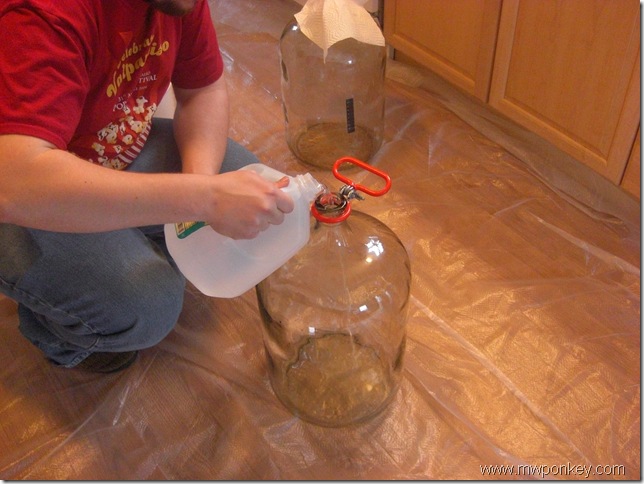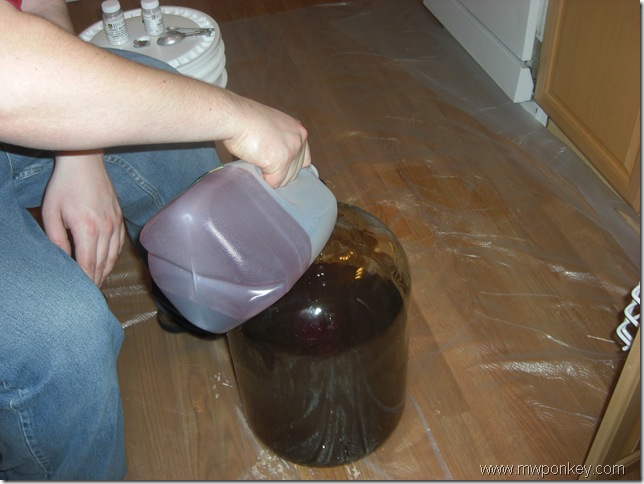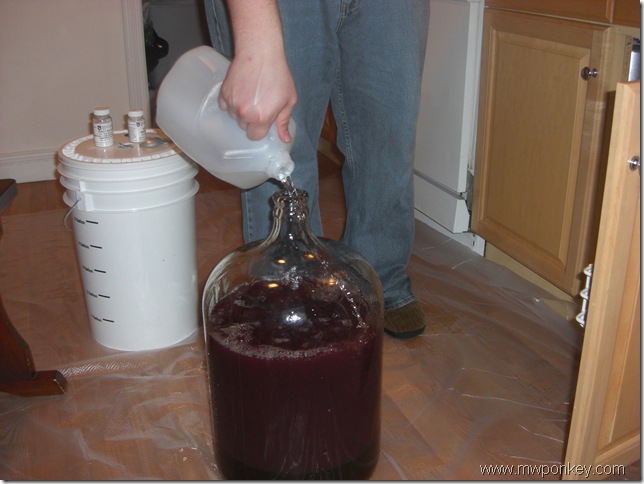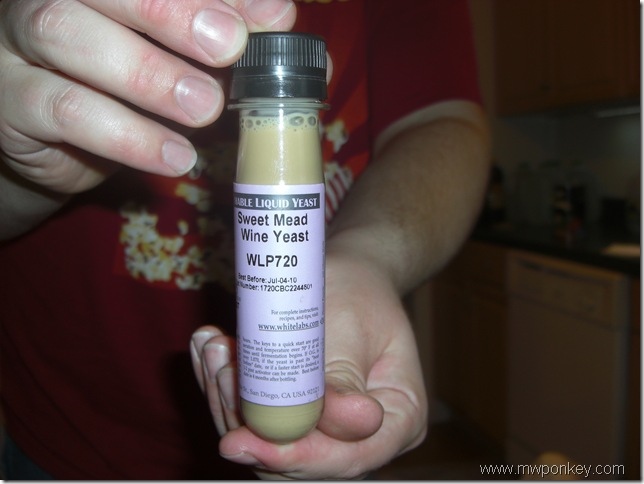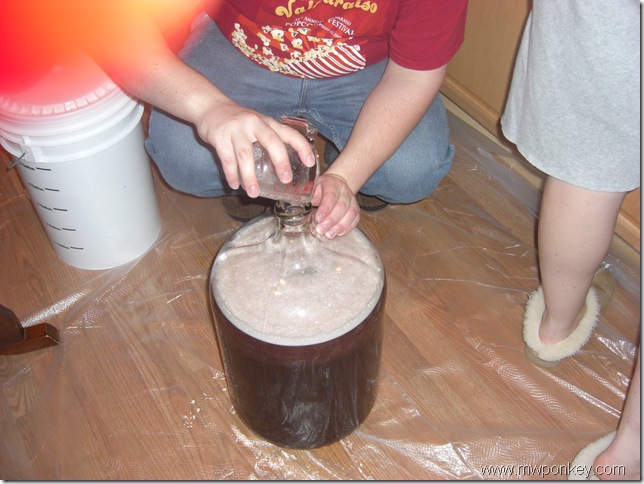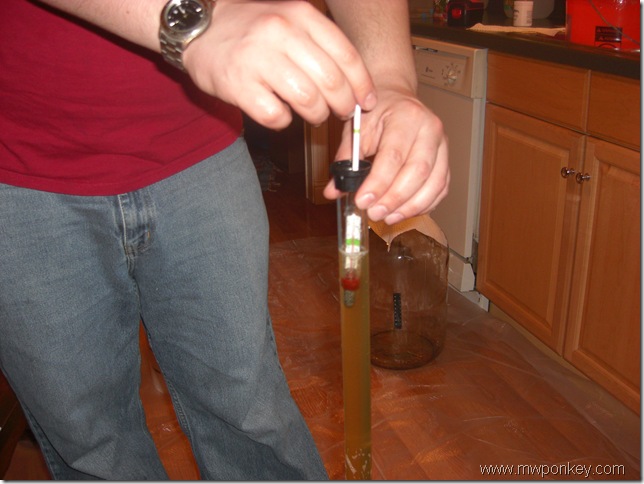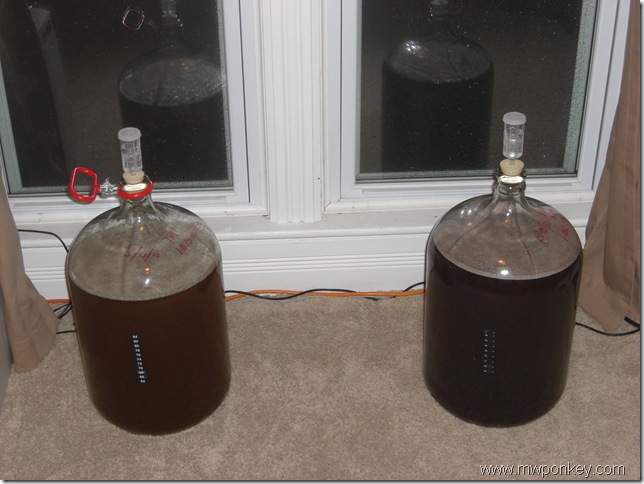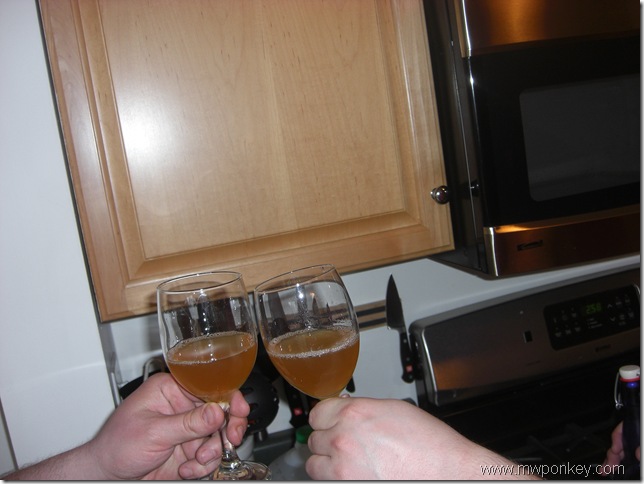Mead Series by Mead Extraordinaire, Matt Ponkey
Once you’ve prepared your must, you should start seeing fermentation with 24-48 hours.
Fermentation
Fermentation is the basic process of yeast turning sugar into ethanol & carbon dioxide.
The basic reaction for fermentation is:
C6H12O6 → 2C2H5OH + 2CO2
Glucose (sugar) is represented by C6H12O6, Ethanol (booze) is represented by C2H5OH, & Carbon dioxide is represented by CO2
What this basically means is for every 1 part of sugar, the yeast churns out 2 parts ethanol and 2 parts carbon dioxide gas.
Yeast
Yeast comes in two forms. Naturally occurring yeast, like the kind found in most fruit juices, and synthetic yeast. The best example of natural yeast is the kind that forms from leaving a gallon of apple cider in the fridge for a month or two. Synthetic yeast is used to make wine, mead, or beer, and is much more stable than natural yeast. Alcohol can still be produced from natural yeast, but it is more susceptible to bacterial contamination.
Sugar
Glucose, or sugar, is the main ingredient for fermentation. In traditional wine making, grapes are used as the primary source of sugar. The grapes are crushed to release the juices stored inside them, which are rich in natural sugars. Different grapes produce different flavors and variations within the resulting wine. Riesling grapes produce a sweet, white wine, because they are a sweet white grape. Syrah or Shiraz grapes produce a dark, dry red wine due to their coloring & sugar content.
In mead, the process is almost identical. Honey is used as the primary source of sugar, so the type of honey you choose will have a major effect on how your mead tastes in the end. For example, I am using an Orange Blossom Honey, which is harvested from bees that primarily pollinate around Orange Groves in Florida. This honey should produce a mild orange flavor in the resulting mead.
Temperature
In reaction chemistry, the hotter the environment, the faster the rate of reaction. The best and easiest example I’ve found is dissolving sugar in water. What dissolves the sugar quicker, hot or cold water? For anyone who drinks coffee or tea, the obvious answer is the hot water. The heat of the water increases the rate at which the sugar dissolves into it. The same principal stands for chemical reactions.
This raises some important points. Previously I had mentioned that you should keep your mead in an area between 70°F-75°F. This was the proper temperature for the yeast strains I was using, however just like people, different yeasts prefer different temperatures. For example, some yeasts prefer a temperature range of 64°F – 68°F, which is too low for the strain of yeast I used. The important thing to remember is that the higher the temperature of your mead, the quicker the fermentation reaction occurs. Although this can increase rate of fermentation, potentially speeding up the overall process, try not to raise the temperature on your mead is too high. This can work the yeast so hard that it will die prematurely, cause such rapid fermentation that will break your airlock, or worse yet, foster bacterial growth within your mead.
Bacteria
Bacterial contamination is one of the greatest threats to your mead. Bacterial growth, at any stage, can easily ruin a batch, however if it occurs during fermentation, failure is almost guaranteed. The best way to prevent bacterial contamination is proper sterilization of equipment and working areas during all stages of brewing.
In the end, keep a close eye on your mead throughout the fermentation step, as it is probably the most critical to the success of your mead. The best way to tell if fermentation is complete is to look at your airlock. When it’s complete, no more carbon dioxide will be produced, so you won’t see anymore bubbles coming through your airlock. If you have a glass fermentor, it’s very easy to tell if your fermentation is complete simply by looking at your mead. During fermentation, you should see very small bubbles rising to the surface, and the surface of the mead should be a frothy mess of bubbles. After fermentation is complete, the bubbles will no longer rise to the surface, and the surface will be completely still. If you bump your fermentor and see any activity or bubbles, this does not mean you restarted fermentation, it only means that you released some trapped carbon dioxide.
As always, if you have any questions, feel free to email me.
Best of luck!
